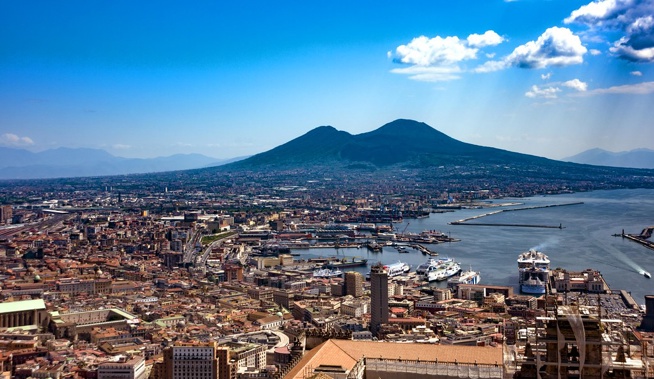
It’s Italy in the extreme. She’s rough and ready and in your face. Gritty, gripping, daunting and intimidating to the uninitiated, mighty Naples is a southern Italian classic beyond comparison. It can strike newcomers as a hot mess. I have to confess that on several prior occasions, I haven’t ventured beyond the central train station in Naples, surrounded by Piazza Garibaldi. The ensuing piles of rubbish, swarms of beggars and general bad vibes on the streets outside the station proved to be potent turn-off – and I high-tailed it out of town bound for the Amalfi Coast. By train, it is the critical stepping-stone to reach Pompeii, Sorrento and beyond.
But last month, I was determined to give Naples a fair shake, eager to get a proper flavour of what this heaving, high-density city had to offer. Overcoming my fear of being ripped off, mugged, gunned down by the Camorra, or run down in a city where red lights are merely decorations, my urban safari in Naples was certainly eye-opening but undeniably rewarding. I was in town as a port call aboard Princess Cruises’ spectacular new flagship Sun Princess, so disembarking at the port terminal, Stazione Marittima, affords an effortless entrance into downtown Naples, on foot.
Towering in front of me was Castel Nuovo, one of the city’s imposing landmarks. This 13th century medieval castle was built by the French and revamped during Spanish Empire rule. Inside, the Palatine Chapel features historic frescoes by Giotto, while the Throne Room now plays host to city council meetings. When Naples finally joined a united Italy under King Vittorio Emanuele II in 1861, Naples was flush with new-found energy and enthusiasm. That was manifest in the extravagant construction of Galleria Umberto I, a glorious light-filled shopping gallery crowned with a domed glass and steel roof.
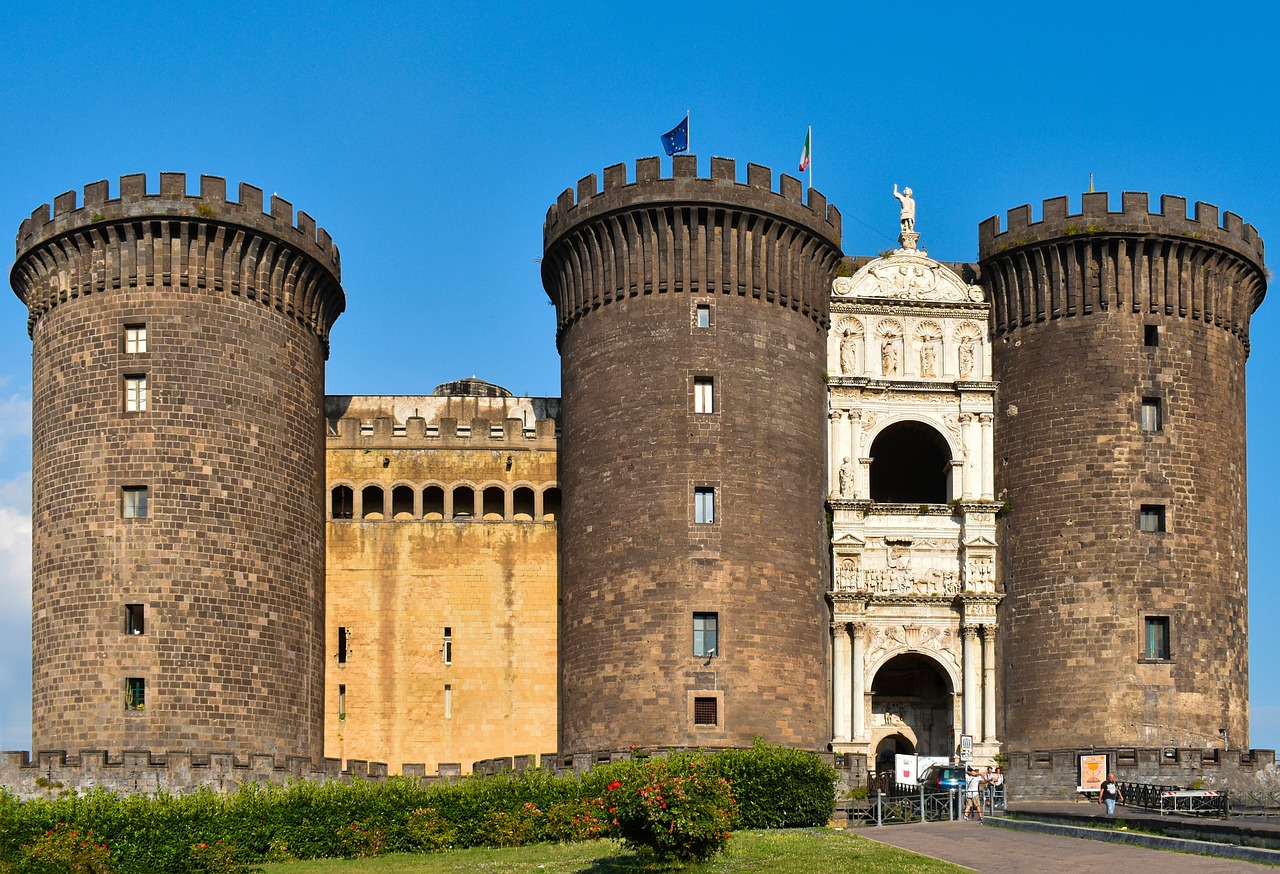 Castel Nuovo in Naples. Photo / Supplied
Castel Nuovo in Naples. Photo / Supplied
It’s a virtual replica of the galleria in Milan and was built at the end of the 19th century as part of a major project to revitalise much of Naples. Across the road, pop into the Gran Caffè Gambrinus, a landmark coffee house built in 1860 which fast became the living room for high society in Naples. Some of Europe’s best pastry chefs, ice cream makers and baristas immediately brought the cafe the goodwill of the royal family – and it’s remained a Neapolitan institution ever since. Pop in here for a sfogliatella, a shell-shaped Italian puff pastry similar to a croissant, but injected with sweet ricotta cheese and fragranced with vanilla, cinnamon, or vivid Sorrento lemons. The sfogliatella is deliciously warm and gloriously crisp, with a fluffy, flavourful interior. They are a synonymous with Naples and are deliciously good.
You’d never find yourself short of a church to visit in this staunchly Catholic city, but within the Gothic grandeur of Naples Cathedral, the relics of St. Januarius are held. Widely considered as the protector of Naples, Januarius was an early Christian who was beheaded under Roman rule. Three times a year, the faithful gather in and around Naples Cathedral to witness what they consider as the miracle of the blood. A sample of his dried blood is kept in a sealed glass vial, but when it is brought out for public display three times a year, it supposedly liquifies in front of the gathered thousands. The blood is also said to spontaneously liquefy at certain other times, such as papal visits, including when Pope Francis kissed the vial on a visit to the cathedral, several years ago. Believe it or not!
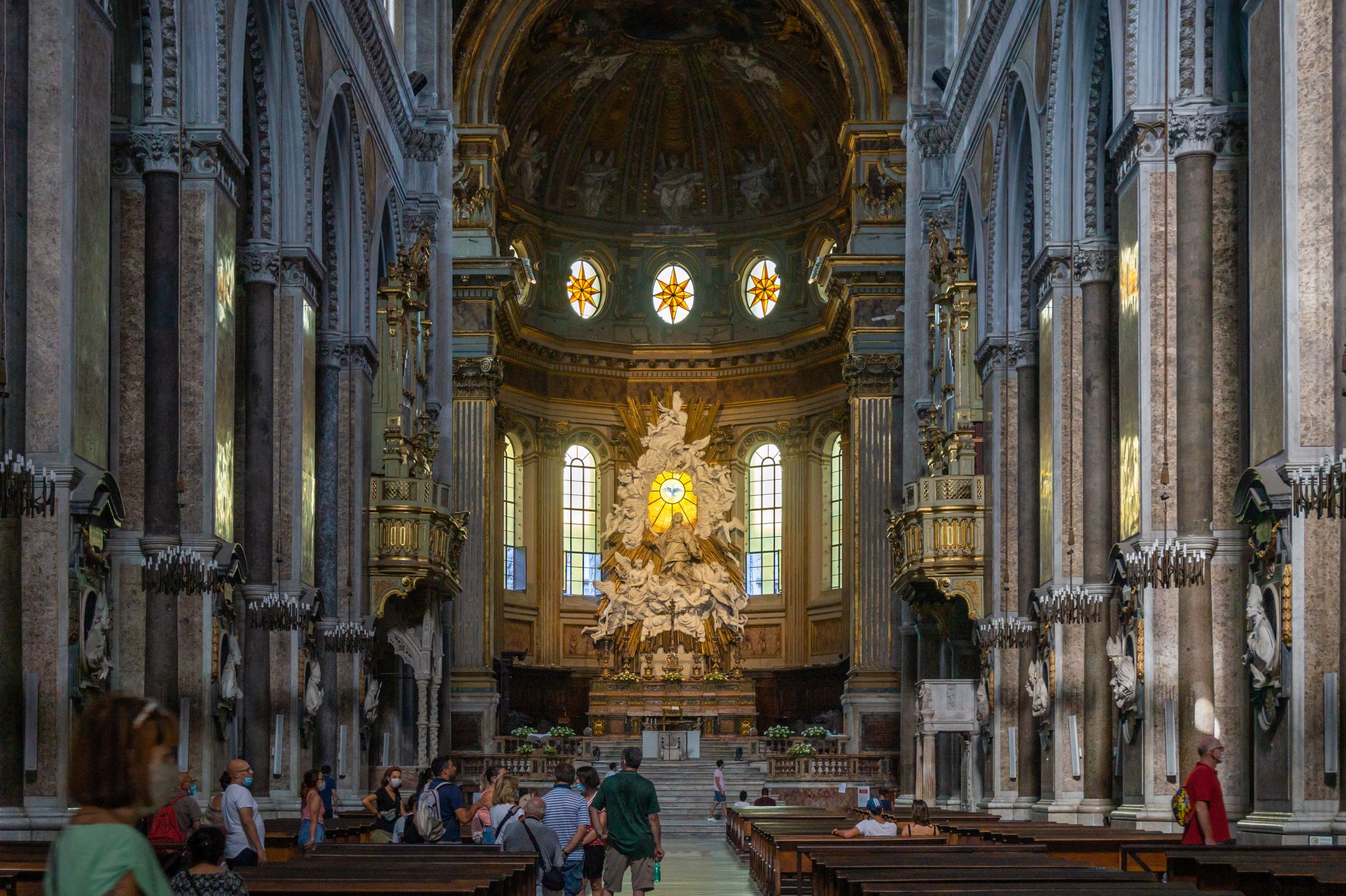 Naples Cathedral. Photo / Supplied
Naples Cathedral. Photo / Supplied
There are some epic streets in Central Naples worth strolling, like Via dei Tribunali, one of the city’s main avenues that runs from east to west, and reaches back to ancient rule under the Greeks and the Romans. It brims with monuments including Naples Cathedral, while below ground lies the Monumental Complex, the vast ruins of the city's ancient market, which you can explore. Running parallel to the street is the equally famous thoroughfare of Spaccanapoli, while via Toledo is the other major central city artery.
But it’s in the twisting skinny lanes of the old city that you’ll soon savour a vivid slice of Neapolitan life. Being such a high-density city with very few green spaces, life tumbles out into the street like an al fresco pageant. It’s where neighbourly chit-chat and heated arguments play out in full cry; where kids play neighbourhood football; teenagers flirt; schoolboys fight; where laundry is hung out to dry across the lanes; and market stall vendors tout their wares with operatic gusto. Just keep an eye out for the kamikaze scooter-riders ripping through the lanes as you order up some pizza.
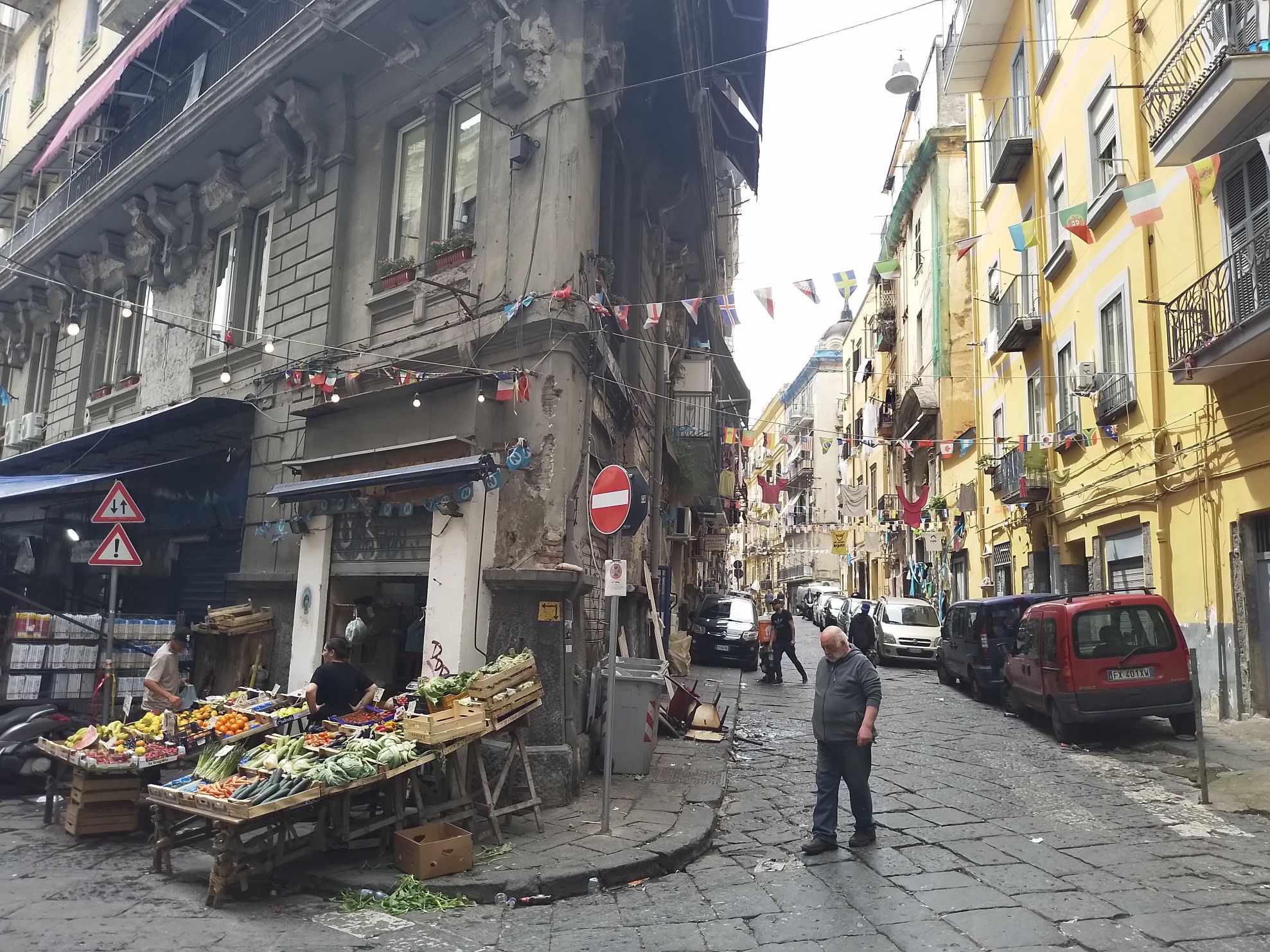 Life in the lanes of Naples. Photo / Mike Yardley
Life in the lanes of Naples. Photo / Mike Yardley
As the birthplace of pizza, there are two "basic" Neapolitan styles: the Pizza Marinara, which combines tomatoes, oregano, olive oil, and garlic; or the Pizza Margherita which uses tomatoes, olive oil, fresh bufala mozzarella and basil leaves. Neapolitan pizza is typically made with dough left to ferment for up to 48 hours, producing a soft, chewy base with a slightly crispy crust. The sauce owes its unmatched character to San Marzano tomatoes, nurtured in the nearby volcanic soils of Campania. These tomatoes offer a harmonious blend of sweetness and subtle acidity. Popular legend says that the Margherita pizza was named in honour of Queen Margherita, wife of Umberto I, who was said to have liked its mild fresh flavour and observed that its topping colours—green, white, and red—were those of the Italian flag.
And one of the best places to sample classic pizza in Naples is at Pizzeria da Michele, on Via Cesare Sersale. As a stickler for tradition, it’s one of the oldest and best pizzerias in Naples. Founded in 1870, Da Michele issues numbered tickets to patrons, whether you’re lining up for a table or for take-out. Service is swift and even brusque. If you’re eating in, don’t be surprised if you’re kicked out if you’re deemed to have been lingering too long in this very small restaurant, with a portrait of the Pope on the wall, watching over proceedings. The huge crowd of eager patrons biding their time outside is a constant – undoubtedly fuelled by the pizzeria’s starring appearance in Eat, Pray, Love with Juliet Roberts.
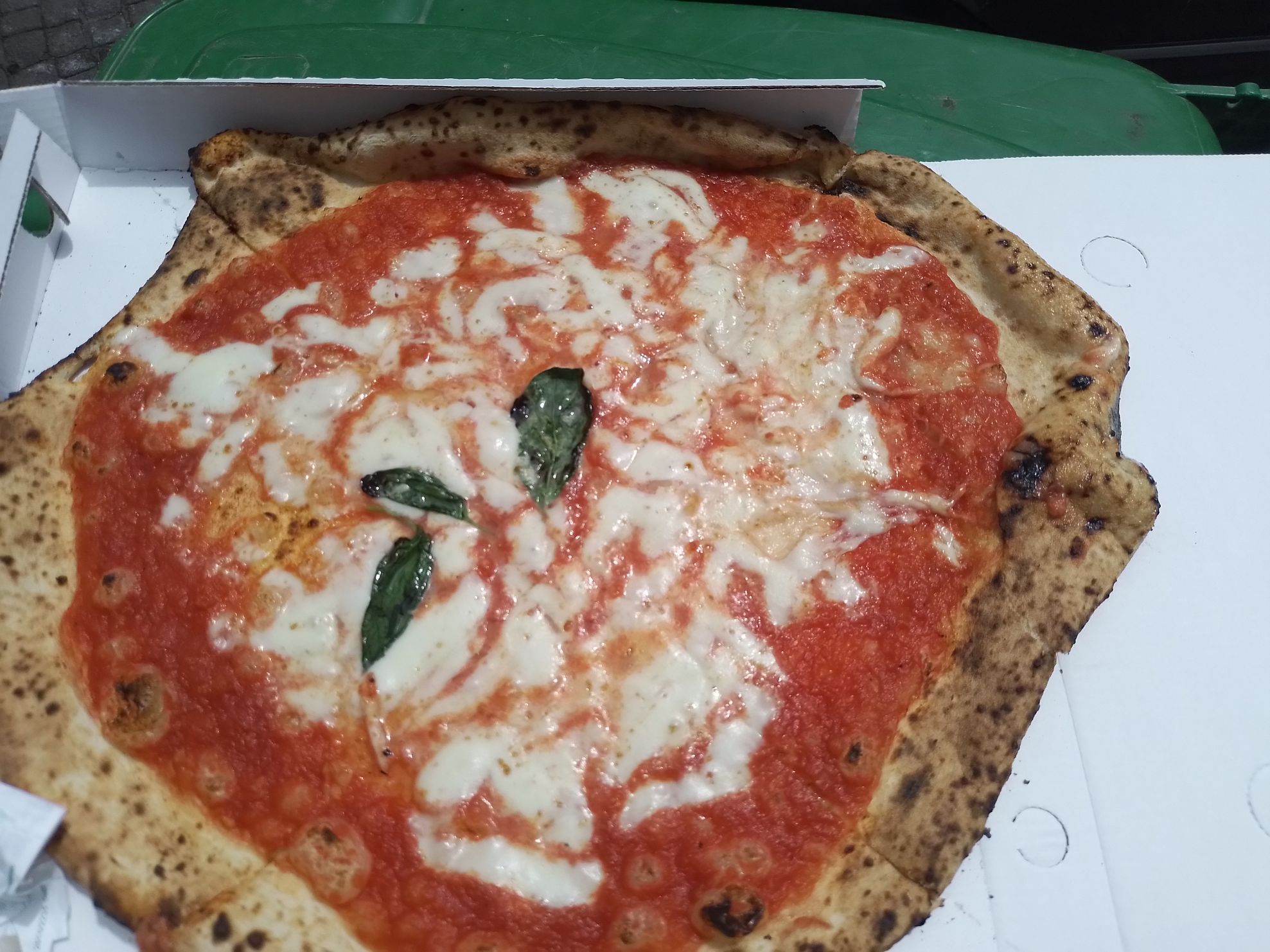 Pizza Margherita at Pizzeria Da Michele. Photo / Mike Yardley
Pizza Margherita at Pizzeria Da Michele. Photo / Mike Yardley
The pizzas are cooked rapid fire in the brick-lined wood-burning oven, at nearly 500C, in the front of the dining room. They cook so fast that two pizzaioli work in tandem, one lowering a pizza onto the oven floor just as the other removes one. I love how Neapolitan pizza is leopard-spotted, with charring on both the edges and bottom. A true Neapolitan pizza has a thin, soft centre that’s slightly sloppy in the middle. Despite their movie screen fame, Da Michele won’t burn a hole in your pocket. Their delectable Marinara and Margherita pizzas, which are bigger than a dinner plate, will only cost you 5 Euro.
A picturesque alley loaded with Insta-gold is Via San Gregorio Armeno, legendary across Italy for its artisan shops that sell handcrafted presepio, nativity-scene figurines, spilling out of the stores into the street. Visit at Christmas time and it descends into pure madness. As well as representations of the most typical religious figures for Christmas, you can also find more contemporary secular figurines, from everyday characters such as butchers and dancers to famous footballers, politicians and celebrities. Almost every figure and decoration found here is handmade by local artisans.
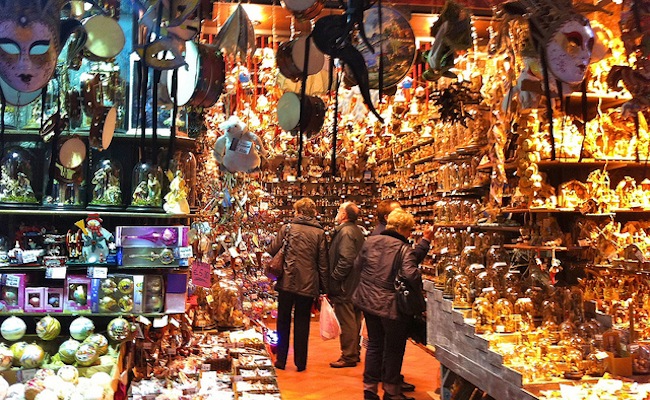
Via San Gregorio Armeno. Photo / Naples Unplugged
Get lost in the spaghetti-like tangle of lanes in the Spanish Quarter which is home to the Murale Diego Armando Maradona. This three-story passion project is located at Via Emanuele De Deo. Spontaneously created by a local fan, it’s a towering homage to Diego Maradona, who helped the local team Napoli to two Serie A titles, an achievement that was at the time unprecedented for a team from Italy’s south. Beneath the mural, you’ll see small shrines to the player left by locals. If football isn’t your thing, you can find a Sophia Loren mural on Vico San Liborio, or wander to Via Montesilvano, a corridor of street art nicknamed the “Montmartre of Naples.”
If there is one museum to visit it has to be the Naples National Archaeological Museum. Originally built as army barracks, the National Archaeological Museum of Naples sprawls across four floors and showcases a huge collection of Greek and Roman antiquities as well as pieces from Ancient Egypt. Highlights include the Farnese Collection - one of the most important artistic collections from Greco-Roman Antiquity. The collection includes perfectly preserved classic sculpture and artworks recovered from the villas of ancient Rome. I was particularly keen to explore the upper floors of the museum which showcase the most priceless artefacts from the ashes of Pompeii, including mosaics and bronze sculptures that survived the eruption of Vesuvius.
A scale model of Pompeii vividly illustrates the sheer extent of devastation caused by the catastrophic eruption 2000 years ago. Best of all, there’s a “Secret Room”, which was the named by the Bourbon Monarchy. This houses the most X-rated collection of erotic art salvaged from the Pompeii excavations – hundreds of works. There’s no question that they were a raunchy lot in Pompeii and the city’s elite commissioned a head-swirling array of erotic art pieces, particularly statues and frescoes, that leave nothing to the imagination. If you’re planning on a taking a daytrip to Pompeii, which is just a short train ride away, definitely combine that with a museum visit to complete the experience.
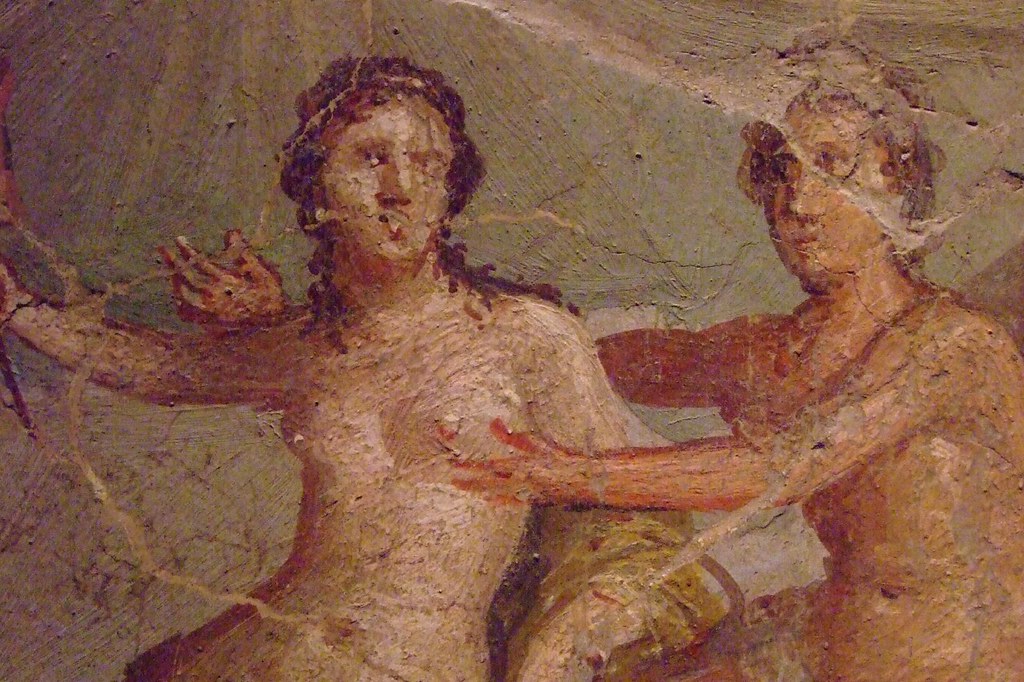 An erotic fresco from Pompeii. Photo / Supplied
An erotic fresco from Pompeii. Photo / Supplied
The towering silhouette of Vesuvius, leering over the heaving city of Naples, is a captivating sight, no matter where you are in the city. One of the best haunts to join the locals for a waterfront stroll and lashings of gelato is on Lungomare. This sweeping promenade, edging the Bay of Naples, leads north from the city centre for over 2km. The views are nothing short of exquisite, taking in the bay, Mt Vesuvius, magnificent seaside Liberty-style villas. It's particularly romantic at dusk, when Capri and the volcano take on a smouldering orange hue.
I visited Naples aboard Sun Princess, the game-changing new addition in the Princess Cruises’ fleet. As the next level Love Boat, Sun Princess is an engineering marvel, powered by LNG, and the most luxurious Princess ship built to date, with an enthralling array of entertainment and activity offerings. This glorious ship is like a floating glasshouse, with the most balconies and sun decks on any Princess ship, lapping up the sunshine and crystal-clear waters, in 2024/25, across the Mediterranean and Caribbean. www.princess.com
Mike Yardley is our resident traveller on Jack Tame Saturday Mornings.
Take your Radio, Podcasts and Music with you









